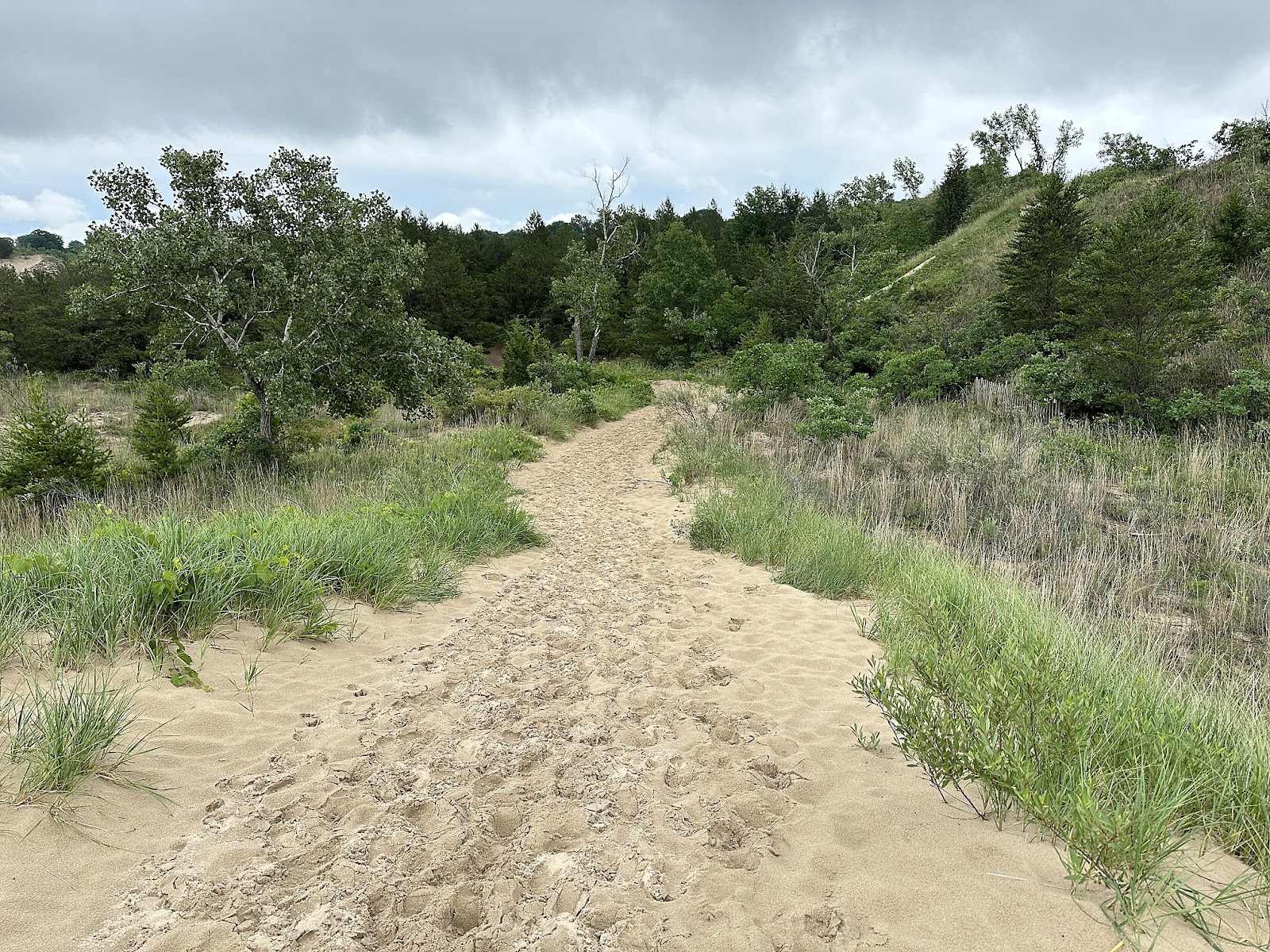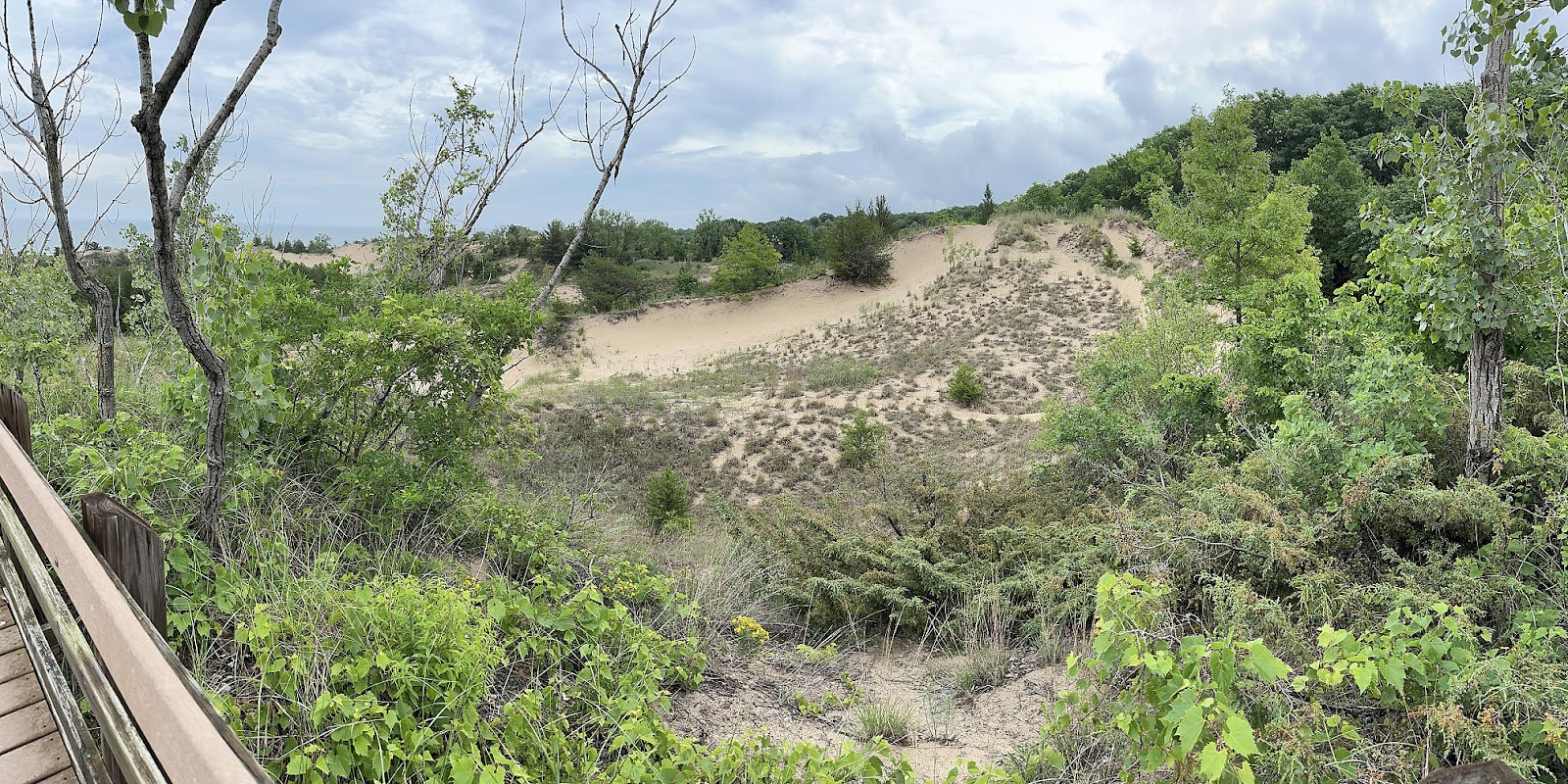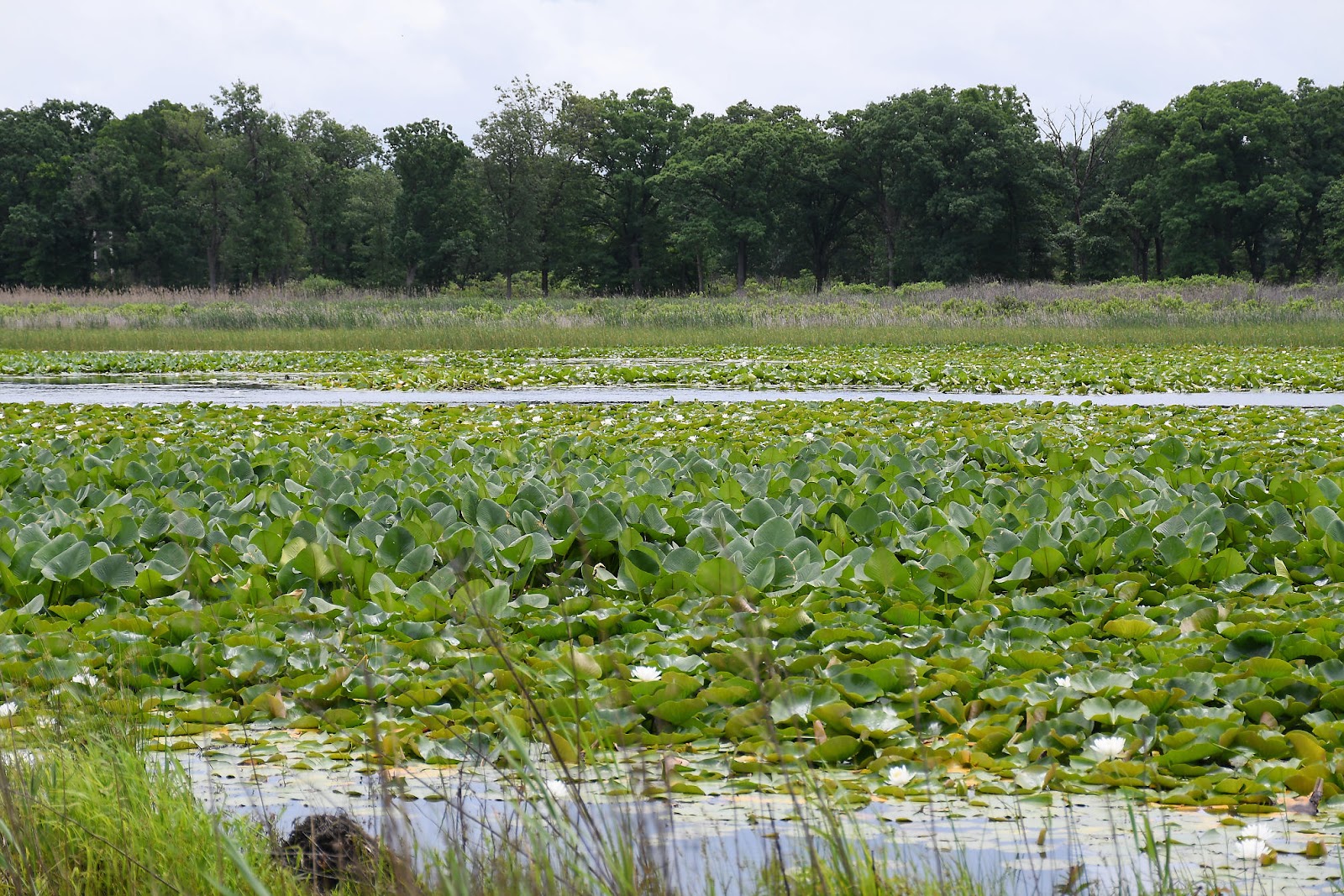Indiana, Part 2 - Bad Flies, Good Flies in Indiana Dunes [240604-05]
We continued our adventures in Indiana Dunes National Park, spending time on some actual dunes.
-----
After the previous evening's increasing number of mosquitoes, Tom decided to apply a layer of Repel Lemon Eucalyptus (which had proven itself to be quite effective against mosquitoes when we visited Maui in '22) before pulling out from the campsite Tuesday morning. The mosquitoes by the dump station pretty much left him alone when we stopped there to top off our water tanks, so he figured "all good".
It rained that evening, leaving a warm muggy night in its wake. As it got darker, the fireflies started coming out. Christine lived in Ohio when she was a child so she had seen fireflies before, but Tom had never seen any in real life before; he found them quite delightful - "like Christmas lights in the bushes that move"! We tried videoing them, with mixed results. They didn't come out very well on the iPhone (we suspect that their blinks might have been filtered out as signal noise by some Apple algorithm), but were more visible on the Nikon. The video below shows both (iPhone in the first half, Nikon in the last).
-----
Wednesday morning, Tom put a fresh coat of picaridin on and we drove 9 miles (30 minutes) out to the West Beach region of the park, which has three short semi-interconnected trails that can be hiked as a large 3.4 mile loop. We started with the Dune Succession Trail, which starts on the beach - from which we could get a very hazy view of Chicago off in the distance.
"Succession" is the technical term for when one plant community replaces another, until finally a stable community develops and the trail shows how as you move inland from the beach more and larger plant species appear.
We found this sign about "Diana" - a local folk hero - somewhat humorously ironic. She was an early 20th century woman who decided to leave her city life in Chicago and live a more simple life out on the Indiana dunes instead, doing so for almost a decade. The irony, of course, is that if someone were to try something like this today our friends in Dune Acres (or any number of the other private communities) would sooner run her out of town than herald her as a folk hero!
The West Beach Trail goes through an area that was sand mined in the late 1920's, but has since been restored. The signs say "it is a great place to see prickly pear cactus" but the ones we saw were extremely small and low to the ground. These flowers were pretty, though.The trail continues on by Long Lake, which is filled with water lilies - and even has a beaver lodge!Long Lake Trail goes up a hill for an elevated view of the lake - and then actually meanders for quite a distance away from the lake over some heavily forested (and insected) hills that we probably wouldn't have minded skipping - particularly since the bugs in that area seemed to be less affected by the picaridin.The highlight of this stretch was this rabbit that crossed our path.
-----
Having done everything we planned to do in Indiana Dunes - and the weather being quite hot and humid still - we returned to the Visitor Center and used the WiFi from the theater there for the rest of the afternoon. Tomorrow we'd be leaving Indiana for awhile, and heading into Michigan.






































Comments
Post a Comment